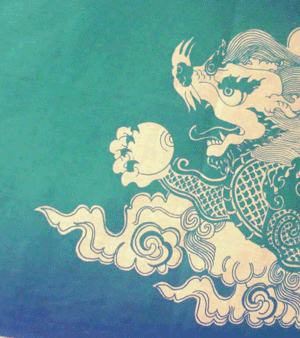General Tai Chi Notes
By David McCain
Dragon's Pearl Tai Chi
December 4, 2012
Feeling Earth Connections:
Part I—The Earth and Harmony in Human Balance
Understanding physical balance is essential in Tai Chi movements. "Keeping your balance" is a commonly heard phrase that belies a rather static and limited view of balance typical in our culture. Tai Chi on the other hand seeks a dynamic balance that is always changing. Tai Chi alignment always starts with a clear connection to the earth and works this connection through the whole body.
The best approach to learning Tai Chi balance is through a self discovery process by feeling your way along. There are many things about the body's movements that give clues to achieving harmonious balance. It is most useful to feel these internal movements in order to make adjustments.
The Earth
Humans are the middle way between Heaven and Earth. Tai Chi deals with both heaven and earth, but the preponderance of Tai Chi work deals with connections to the earth. If there are Tai Chi projections into the heavens, then these projections are always grounded in some manner with earth connections. Always bringing upward moving energies in the body back down to the tan t'ien in the lower belly is a general rule in Tai Chi.
Gravity is the overriding reality for all of our movements. Tai Chi makes efficient and effective use of gravity by always working with a clear sense or feeling of connection to the earth. The feet and the tan t'ien (the body's center of gravity located in the lower belly) are especially important for connecting with the earth.
Our daily lives are frequently filled with many loose, scattered or conflicting thoughts which often seem to revolve around our heads. In a gentle way Tai Chi does not allow for this 'top heavy,' ego driven life style. Taking our thoughts to our feet and to the earth allows us to make simple, grounded connections with the earth. Moreover, our lives become easier and our mental thought processes become clearer when we practice Tai Chi with this sense of connectedness to the earth.
Visualization (in the mind's eye) of the earth and important earth centers can often be helpful in learning to feel earth connections. Exercise: First, visualize the center of the earth perhaps with its molten center and then move your body relative to this distant core. This simple awareness helps promote an earth connection.
Consider these aspects of connecting with the earth:
I. Centering and Grounding
Centering is the awareness and method of making internal connections to specific body centers relative to the environment—such as with the tan t'ien in the lower belly or bubbling springs in the feet related to the earth. Grounding is the general sense of bringing focus to your efforts and perhaps bringing unruly physical or mental conditions under control. Various applications of centering and grounding—even outside of Tai Chi—are very practical for our daily lives. Sometimes the two terms are used interchangeably.
II. Earth Centers Outside the Body
1) Center of the Earth. (See the exercise above.)
2) Solid Ball or Mass Below the Floor. Exercise: Visualize a heavy iron ball of about 4 or 5 inches diameter located about 3 feet below the floor which relates to or "counterbalances" the tan t'ien in the lower belly. The "shadow body" below the floor can mirror the body above.
III. Earth Energy
There is an additional, inexplicable upward force coming from the earth contrary to the downward pull of gravity. Awareness of and connection to this upward energy through the feet to the top of the head is an important development in Tai Chi practice.
IV. Classic Movements of Tai Chi Alignment
Humans are vertically oriented between heaven and earth with only a few square inches of the feet touching the earth. Maintaining the integrity of the essentially vertical central axis is the main principle of Tai Chi. Two movements lengthen the spine for better alignment and integrity of the central axis:
1) Turtle—the pelvic tilt (which must be related and adjusted to all other parts of the leg system: feet, ankles, knees, hips and lower back) provides a fine earth connection for the central axis. Turtle is basically a flattening of the lower back and thus 'supports' the central axis mechanically and energetically. The turtle alignment is cut off by sticking the buttocks out and curving the lower back forward.
2) Crane—the gentle moving up of the head and neck (like a puppet suspended on a string from its crown) provides a movement towards the heavens through the central axis. In a sense, crane is an antigravity movement by creating an easy and light feeling even as the body is well centered, balanced and grounded by the earth. The crane alignment is cut off by slumping.
